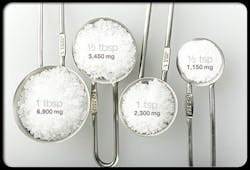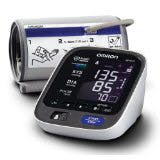New guidelines for the management of arterial hypertension
The new guidelines base recommendations on appropriately conducted studies identified from an extensive review of the literature, to consider, as the highest priority, data from randomized, controlled trials (RCTs) and their meta-analyses. However, they do not disregard the results of observational and other studies of appropriate scientific caliber.
The levels of evidence are as follows.
• Level of evidence A - Data derived from multiple randomized clinical trials or meta-analyses.
• Level of evidence B - Data derived from a single randomized clinical trial or large non-randomized studies.
• Level of evidence C - Consensus of opinion of the experts and/or small studies, retrospective studies, registries.
Based on the new guidelines, it might mean that many of these patients who were on medication would no longer need to be taking pharmaceuticals. It has been estimated that millions of people could be affected by the new guidelines.
The committee was asked to update the guidelines that have been in place for more than thirty years. They were published online December, 2013, in the Journal of the American Medical Association. The group of seventeen experts found no reason to change any other section of the guidelines.
Dental care professionals realize that the key component of any thorough dental hygiene appointment is patient assessment.(4) While there are several tools used for conducting screenings and examinations for oral health, other aspects of patient health that may be related to dental heath are often overlooked. A patient’s blood pressure is one of these parameters. Appropriate monitoring of blood pressure cannot only improve outcomes of dental care but also play a role in improving the overall health of patients.
References 1. The Task Force for the management ofarterial hypertension of the European Society of Hypertension (ESH) and of the European Society of Cardiology (ESC). 2013 ESH/ESC Guidelines for themanagement of arterial hypertension. Journal of Hypertension 2013, 31:1281–1357. 2. Mancia G, De Backer G, Dominiczak A, Cifkova R, Fagard R, Germano G, et al. 2007 Guidelines for the Management of Arterial Hypertension: The Task Force for the Management of Arterial Hypertension of the European Society of Hypertension (ESH) and of the European Society of Cardiology (ESC). J Hypertens 2007; 25:1105–1187. 3. Carter BL, Rogers M, Daly J, Zheng S, James PA. The potency ofteambased care interventions for hypertension: a meta-analysis. ArchIntern Med 2009; 169:1748–1755. 4. http://adctoday.com/sites/default/files/literature/9000_Whitepaper_0002.pdf.




